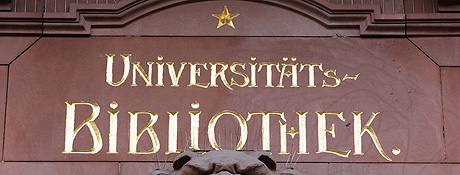Front Runner among Germany’s Major Academic Libraries
11 July 2012

After coming out on top in the two previous years, Heidelberg’s University Library is once again a front runner in the renowned BIX Library Index. This year’s results are published on Thursday (12 July). Heidelberg is the only major German academic library to be up among the leaders in all four BIX categories: offerings, usage, efficiency and development. The pillars of its success are high usage figures, efficient work routines and investments in the development of electronic services. This year the BIX evaluation methods have been revamped, replacing fixed rankings with group comparisons.
“We are proud of the result and see it as proof of the outstanding work done here in Heidelberg”, says Dr. Veit Probst, Director of Heidelberg University Library. “I should like to express my gratitude to the staff for their exemplary commitment. Without it we could never have been so successful.” The outstanding showing of Heidelberg University Library in the four categories assessed by the BIX is even more consistent than in previous years. In terms of usage, efficiency and development, the library was up among the leaders once again, while in the offerings category it did even better than last time, now figuring among the front runners in this sector too.
An essential factor in the library’s excellent performance is the unusually intensive use made of its holdings. Some 1.9 million loans and 4.9 million accesses to databases, e-journals, e-books, document servers and digitised material annually indicate just how attractive the Heidelberg offerings are. Also up over last year is the number of visitors to the library, a total of 2.3 million over the year, which works out to an equivalent of 6,500 per day. “This development shows that extensive electronic resources and a strong demand for places where students can learn and work are not mutually exclusive”, Dr. Probst points out. At present the library is undergoing an extension to the northern reaches of the premises. The result will be a generous learning and studying landscape with 1,000 extra workplaces. In addition, another one million volumes will be made available on new free-access shelving.
Alongside its mainstream services, the Heidelberg library also performs specialised tasks and conducts projects financed by third-party funding. Over and against the previous year, third-party and special funding has risen to over EUR 2.3 million. Undertakings like the virtual reconstruction of Lorsch monastic library and collaborative ventures with the Biblioteca Apostolica Vaticana in Rome and the Getty Research Institute in Los Angeles testify to the degree of international connectivity that Heidelberg University Library has achieved.
The BIX Library Index dates back to 1999. This year 77 academic libraries took part in the evaluation, 55 of them university libraries divided into two size classes. Points were awarded in the four categories offerings, usage, efficiency and development. The rating in the framework of BIX is undertaken by the German Library Association and the Bertelsmann Foundation. To view the results in detail, go to www.bix-bibliotheksindex.de/en.
Note for newsdesks
Digital picture material is available from the Press Office.
Contact
Dr. Veit Probst
Heidelberg University Library
phone: +49 6221 54-2380
ub@ub.uni-heidelberg.de
Communications and Marketing
Press Office
phone: +49 6221 542311
presse@rektorat.uni-heidelberg.de

